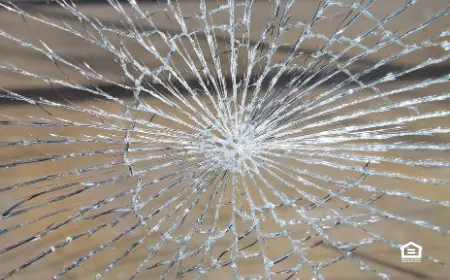How Much to Charge Single Family Renters for Damage?
Dealing with property damage is a regular part of the business of owning single-family rental properties. But before you send your tenants a bill for the repairs, you need to know how much you should charge them. Figuring this out can be surprisingly challenging, partly because the line between ordinary wear and tear and real damage can sometimes be hard to determine. Still, by using a few simple strategies, you can easily determine how much to charge your tenants for the damage they leave behind.
Distinguish between Ordinary Wear and Tear
To charge tenants for damage, you first need to be able to clearly distinguish it from ordinary wear and tear. One of the first and best things you can do to differentiate tenant damage from wear and tear is to complete thorough move-in inspections of the property. Move-in checklists can help document the condition of the rental property before the tenant moves in, which can help settle any future disputes. It also gives you something to compare future inspections against, so that you can better track new damage as it appears.
Educate Tenants in Advance
You can also clearly define what types of issues are considered wear and tear, and which would be considered damage. For example, some property owners and managers will create guides of common examples of each to help educate tenants as well as provide a clear guide for potential future charges. This guide would clearly distinguish things like marks or a few nail holes in the walls (wear and tear) versus large or excessive holes (damage). Another example would be a carpet that is worn thin from years of use (wear and tear) versus rugs that are permanently stained, torn, or smell bad (damage). Creating clear guidelines can help remove some of the ambiguity when the time comes to determine whether the property has been damaged by the tenant or is simply suffering from ordinary wear and tear.
When Damage Occurs
If you decide that damage has occurred, the next step is to figure out the reasonable cost for repair or replacement. Rather than simply charging the tenant for the new item or the cost of replacement, it is important to first consider the age of the item, the original cost, the length of time the repair will take, and whether you will do the repair yourself or need to hire someone else to do it. For large repairs, it is a good idea to get several estimates from licensed contractors. This can help you better know how much it will cost to repair the damage, and how much of that cost you can reasonably ask your tenant to pay.
Standard Cleaning and Repair List
One alternative to this approach is to create a standard cleaning and repair list, where commonly damaged items are listed along with the estimated cost of repair. There are both advantages and disadvantages to this approach. On the one hand, if you include the list in your lease agreement, your tenant will be more aware of what certain repairs will cost. This may help them be a little more careful with the property. On the other hand, if the repair ends up costing more than what is on your list, you may end up paying the difference yourself.
Itemized List to Tenant
No matter how you determine the cost of the repairs, you should always give your tenant an itemized list of the damage and repairs, as well as detailed receipts. This is especially true if you plan to deduct the cost of repairs from the tenant’s security deposit. If the tenant is still occupying your property, charging them for repairs is a bit trickier. Still, giving them written notice of the damage and an invoice detailing which portion of the repair cost is their responsibility is a good plan of action. Do you still have questions about how much to charge for tenant damage? If so, contact your nearest Real Property Management franchise office. We can assist you in making well-documented decisions about tenant damage, charging for repairs, and even help you obtain estimates from trusted professionals.
We are pledged to the letter and spirit of U.S. policy for the achievement of equal housing opportunity throughout the Nation. See Equal Housing Opportunity Statement for more information.
Get the Neighborly App
In addition to Real Property Management's expert skills in managing your rental property, you can utilize Neighborly's other brands to maintain and enhance your home. Use the Neighborly App to get connected to local home service professionals. Download and receive offers only available on the App.
Depending on current health and safety regulations in your area, some of the services mentioned in this post may not be available. Neighborly service providers will follow the latest health and safety guidelines provided by the local and state governments. Please check with your local Neighborly service provider for details at the time you need service(s).






